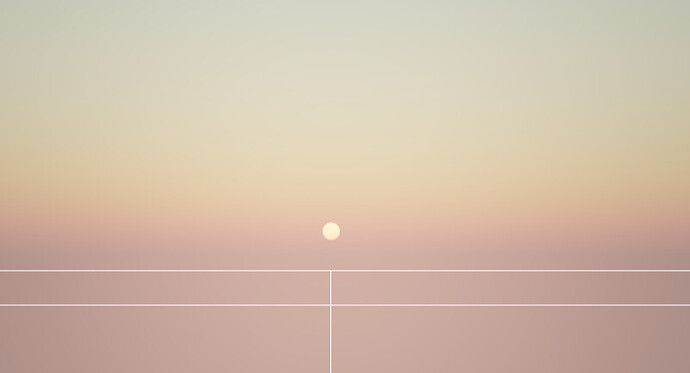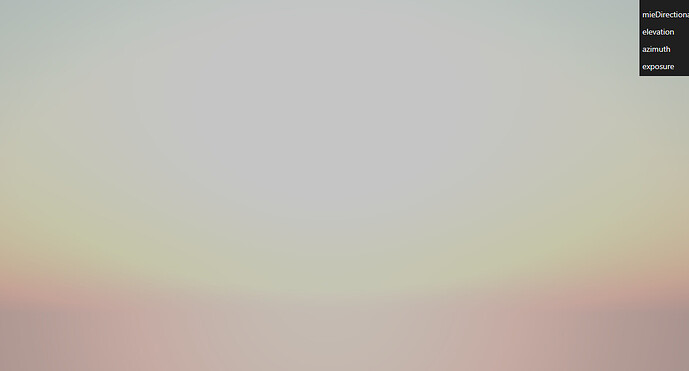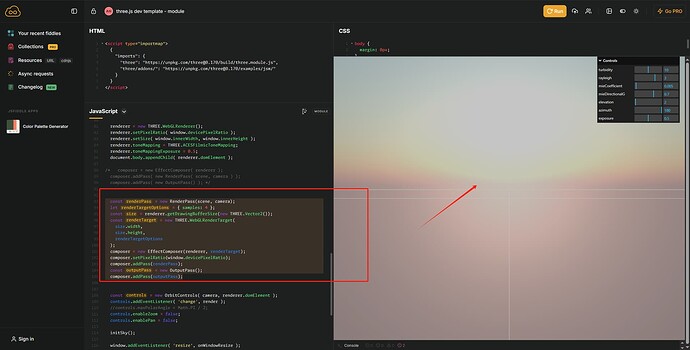Figure 1 is the case when post-processing is not used, and in Figure 2 I use add-post-processing, and I only add the base render pass
This is a shared online case
I can’t edit the codesandbox so I’m using a fiddle. Try it with the following code:
I’m like this because I need to use webgl anti-aliasing
const renderPass = new RenderPass(scene, camera);
let renderTargetOptions = { samples: 4 };
const size = renderer.getDrawingBufferSize(new THREE.Vector2());
const renderTarget = new THREE.WebGLRenderTarget(
size.width,
size.height,
renderTargetOptions
);
composer = new EffectComposer(renderer, renderTarget);
composer.setPixelRatio(window.devicePixelRatio);
composer.addPass(renderPass);
const outputPass = new OutputPass();
composer.addPass(outputPass);
If you create a custom render target, make sure it uses HalfFloatType as the texture type:
let renderTargetOptions = { samples: 4, type: THREE.HalfFloatType };
Otherwise the HDR workflow is broken.
@wenrenqiang you can try pasting the following code in the fiddle and should be able to see the sun.
This is your code with minor additions/changes suggested by @Mugen87.
You can replace the cdn.jsdelivr.net/npm with unpkg.com if that works better in your area.
HTML
<script type="importmap">
{
"imports": {
"three": "https://cdn.jsdelivr.net/npm/three@0.170/build/three.module.js",
"three/addons/": "https://cdn.jsdelivr.net/npm/three@0.170/examples/jsm/",
"three/examples/jsm/": "https://cdn.jsdelivr.net/npm/three@0.170/examples/jsm/"
}
}
</script>
JS
import {
WebGLRenderTarget,
WebGLRenderer,
Scene,
PerspectiveCamera,
HalfFloatType,
MathUtils,
Vector3,
Vector2,
ACESFilmicToneMapping,
} from "three";import { OrbitControls } from "three/examples/jsm/controls/OrbitControls.js";
import { Sky } from "three/examples/jsm/objects/Sky.js";
import { EffectComposer } from "three/examples/jsm/postprocessing/EffectComposer.js";
import { RenderPass } from "three/examples/jsm/postprocessing/RenderPass.js";
import { OutputPass } from "three/examples/jsm/postprocessing/OutputPass.js";
let renderer, scene, camera, controls;
let sky, effectController, sun, finalComposer;
init();
animate();
function init() {
// renderer
renderer = new WebGLRenderer( { antialias: true } );
renderer.setSize(window.innerWidth, window.innerHeight);
renderer.setPixelRatio(window.devicePixelRatio);
renderer.autoClear = false;
renderer.toneMapping = ACESFilmicToneMapping;
renderer.toneMappingExposure = 0.5;
document.body.appendChild(renderer.domElement);
// scene
scene = new Scene();
// camera
camera = new PerspectiveCamera(
40,
window.innerWidth / window.innerHeight,
1,
10000
);
controls = new OrbitControls(camera, renderer.domElement);
initSKY();
initPost();
}
function initSKY() {
sun = new Vector3();
effectController = {
turbidity: 10,
rayleigh: 3,
mieCoefficient: 0.005,
mieDirectionalG: 0.7,
elevation: 2,
azimuth: 180,
exposure: renderer.toneMappingExposure,
};
sky = new Sky();
sky.scale.setScalar(450000);
scene.add(sky);
guiChanged();
}
function initPost() {
const renderPass = new RenderPass(scene, camera);
let renderTargetOptions = { samples: 4, type: HalfFloatType };
const size = renderer.getDrawingBufferSize(new Vector2());
const renderTarget = new WebGLRenderTarget(
size.width,
size.height,
renderTargetOptions
);
finalComposer = new EffectComposer(renderer, renderTarget);
finalComposer.setPixelRatio(window.devicePixelRatio * 2);
finalComposer.addPass(renderPass);
const outputPass = new OutputPass();
finalComposer.addPass(outputPass);
}
function animate() {
requestAnimationFrame(animate);
renderer.clear();
// renderer.render(scene, camera);
finalComposer.render();
}
function guiChanged() {
const uniforms = sky.material.uniforms;
uniforms["turbidity"].value = effectController.turbidity;
uniforms["rayleigh"].value = effectController.rayleigh;
uniforms["mieCoefficient"].value = effectController.mieCoefficient;
uniforms["mieDirectionalG"].value = effectController.mieDirectionalG;
const phi = MathUtils.degToRad(90 - effectController.elevation);
const theta = MathUtils.degToRad(effectController.azimuth);
sun.setFromSphericalCoords(1, phi, theta);
uniforms["sunPosition"].value.copy(sun);
renderer.toneMappingExposure = effectController.exposure;
renderer.render(scene, camera);
}
After using the HalfFloatType, if you add a Lensflare, the Lensflare will disappear
After using the HalfFloatType, if you add a Lensflare, the Lensflare will disappear 2


